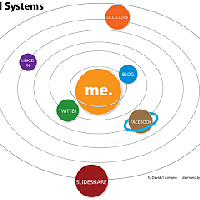Home
About Us
Page 2
While the program itself is overseen by the Department of Education, the institution that the student is enrolled in will act as the disbursing agent. The Department of Education will then calculate whether the student is eligible for assistance and the office the student sent the original application sent to will send the student a notification whether they were eligible for assistance. The student then delivers this received notification to the institution and will have their grant calculated from there. The institution will both determine and disburse the grant using a schedule that has been created by the Department of Education. Rewards are based on the available funding per institution and how many recipients the institution believe will be eligible for Academic Competitiveness Grants that year.
|
|
To be eligible for Academic Competitiveness Grants, the student is required to be a United States citizen or an eligible non-citizen (this means those with a Alien Registration Card or those with a Arrival Departure Record with specific designations). The student must be enrolled at least half time in a degree program. They also must be eligible for a Federal Pell Grant and in their first or second year of study at either, a two-year or four-year degree-granting institution as previously described. First-year students cannot have been enrolled in undergraduate programs before and second-year student must have at least a cumulative 3.0 GPA for their first year of enrollment.
The total grants were $350,000,000 in 2007; approximately $16,256,000,000 in 2008; and approximately $643,000,000 in 2009. Depending on the need of the student and how much they are assigned, the grant received through the program can range between $750 for students in their first year, and a maximum of $1,300 for students in their second year. Academic Competitiveness Grants assistance cannot exceed the student's actual cost of education. The average reward for students was around $787.
Unfortunately, the U.S. Department of Education, starting in the 2011-2012 financial aid award year no longer funds the Academic Competitiveness Grants program. The reason for this is that the funding had been cut due to budgetary government cutbacks. The program had been operating since July 2006. More information is available at http://studentaid.ed.gov/PORTALSWebApp/students/english/AcademicGrants.jsp
Education Grants for High Achieving Students
Back to Page 1
About The Author The author edits a site featuring Grants for Education and another Government Grants site providing info on every grant the federal government offers. Michael Saunders has an MBA from the Stanford Graduate School of Business. |
Additional Resources
category - Youth Grants
Early-Grade Reading Improvement Interventions Program
Education Grants for High Achieving Students
Children Youth and Families At-Risk Sustainable Community Project
YouthBuild Grants Program
Follow @topgovtgrant
Social Entrepreneurship
Spotlight
Social Enterprise Version 2.0

Midsize businesses are tapping into the social business market because large companies do not need the help of start-ups to create a “social technology stack.” But a social business stack cannot generate revenue by itself.
